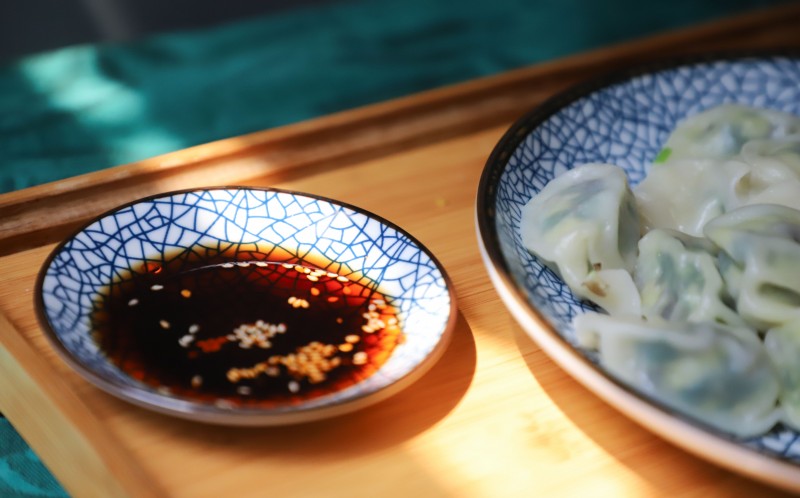On June 29, 2021, the China State Administration for Market Regulation issued Announcement No. 23 of 2021 to strengthen the supervision and management of the quality and safety of soy sauce and vinegar. The announcement clarified that soy sauce and vinegar production enterprises shall not reproduce and sell products labeled as "blended soy sauce" and "blended vinegar". Condiments that do not meet the national food safety standards for soy sauce and vinegar shall not be marked with the names or categories of "soy sauce" and "vinegar".
As indispensable condiments on the Chinese dining table, soy sauce and vinegar have a wide range of applications. Announcement No. 23 of 2021 will effectively promote the mainland's soy sauce and vinegar industry standards, improve product quality, and protect consumers' table safety. In order to provide more information through product labels and protect consumers' right to know, Taiwan has strengthened the labeling management of soy sauce and vinegar. In Hong Kong and Macao, there are no special labeling requirements for soy sauce and vinegar, which should meet the labeling requirements of general prepackaged food.
So how the soy sauce and vinegar on the market should be labeled? Today, the Global foodmate will take you to understand the labeling requirements for these two products in China and Taiwan.

Chinese Mainland
Soy sauce
The production and sale of soy sauce in Chinese mainland must comply with the requirements of GB 2717 "National food safety standard Soy sauce", and the definition of soy sauce is the liquid condiments with special color, aroma and taste prepared with soybean and/or defatted soybean, wheat and/or wheat flour and/or wheat bran as main raw materials, through microbial fermentation.
Although GB 2717 does not have labeling requirements, it clearly defines the definition of "soy sauce". For "blended soy sauce" that does not meet the standard requirements, it can no longer be called "soy sauce".
For soy sauce produced in mainland China, if the product implementation standard is GB/T 18186 "fermented soy sauce", it must be labeled in accordance with the requirements of the standard. That is, the name of the product should be marked with "Fermented soy sauce", and the content of amino acid nitrogen, quality level and the usage "dinning and/or cooking" should also be marked.
Vinegar
Vinegar products should meet the requirements of GB 2719 "National Food Safety Standard Vinegar", where vinegar is defined as a liquid acid condiment that is brewed by microbial fermentation using various materials containing starch, sugar, and edible alcohol alone or in combination. "Blended vinegar" does not meet the requirements in GB 2719, so the product name cannot be called "vinegar".
Similar to soy sauce, fermented vinegar can also choose to implement the recommended national standard GB / T 18187 “Fermented vinegar”. GB / T 18187 has special requirements for vinegar label: the product name should be marked with "fermented vinegar", and the content of total acid should also be marked.

Taiwan, China
Soy sauce
Taiwan clearly stipulates that the processing technology of soy sauce must be indicated on the label of soy sauce products. According to the processing technology of soy sauce, it can be divided into fermentation, hydrolysis, rapid fermentation and mixing.
Fermentation soy sauce: For those Products label processing method as " fermentation", which be use the materials containing plant protein made by cultivating koji mold and fermentation, the total amount of nitrogen not less than 0.8 grams/100 ml (the total amount of nitrogen of black bean soy sauce products are not less than 0.5 grams/100ml).
Rapid fermentation soy sauce: The products made by using plant protein hydrolyzed by acid or enzymes to obtain amino acids solution and with soy sauce mash or soy sauce added to perform fermentation and maturation.
Hydrolysis soy sauce: The products were used plant protein hydrolyzed by acid or enzymes to obtain amino acids solution and without the process of fermentation.
Mixed or blending soy sauce: The products made by mixing two or more soy sauces.
For rapid, hydrolyzed and mixed (blended) soy sauce, the words "rapid fermentation", "hydrolyzed", "mixed or blended" must be marked in the obvious place of the package. For fermentation soy sauce, the word "fermentation" can be marked voluntarily, but if "fermentation" is marked on the label, it must meet the requirements of its regulations.
Vinegar
Blended vinegar produced from brewed vinegar with addition of other materials except artificial vinegar or other acidulant shall clearly indicate “blended” on the package.
Artificial vinegar produced by using diluted acetic acid solution or glacial acetic acid solution, adding sugar, acidulant, seasoning agent and salt, or by mixing thereof with brewed vinegar, shall clearly indicate “artificial” on the package. For artificial vinegar, the acidity (in acetic acid, %) and the method of use should also be indicated.
Fermentation vinegar produced from the mash of grains, fruits, alcohol, wine meal, sugar and other raw materials or added with alcohol through acetic fermentation without adding acetic acid, glacial acetic acid or other sour agents should voluntarily choose indicate “artificial” on the package.
Summary
For the soy sauce and vinegar exported to Chinese mainland, the product must conform to the definition of "fermentation soy sauce" and "fermentation vinegar", otherwise, the name or category of "soy sauce" or "vinegar" should not be marked. Soy sauce and vinegar exported to Taiwan should meet the label requirements of Taiwan.